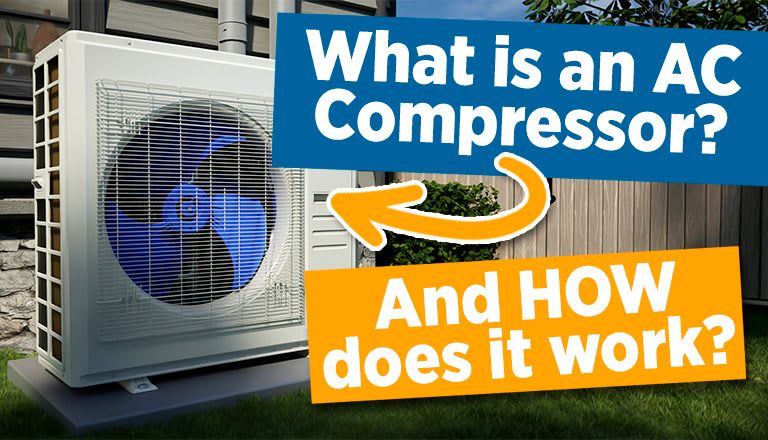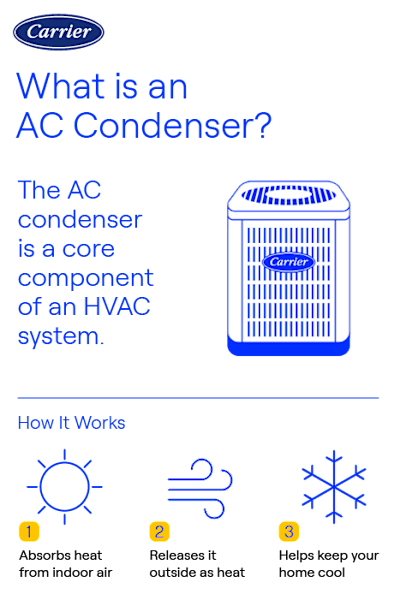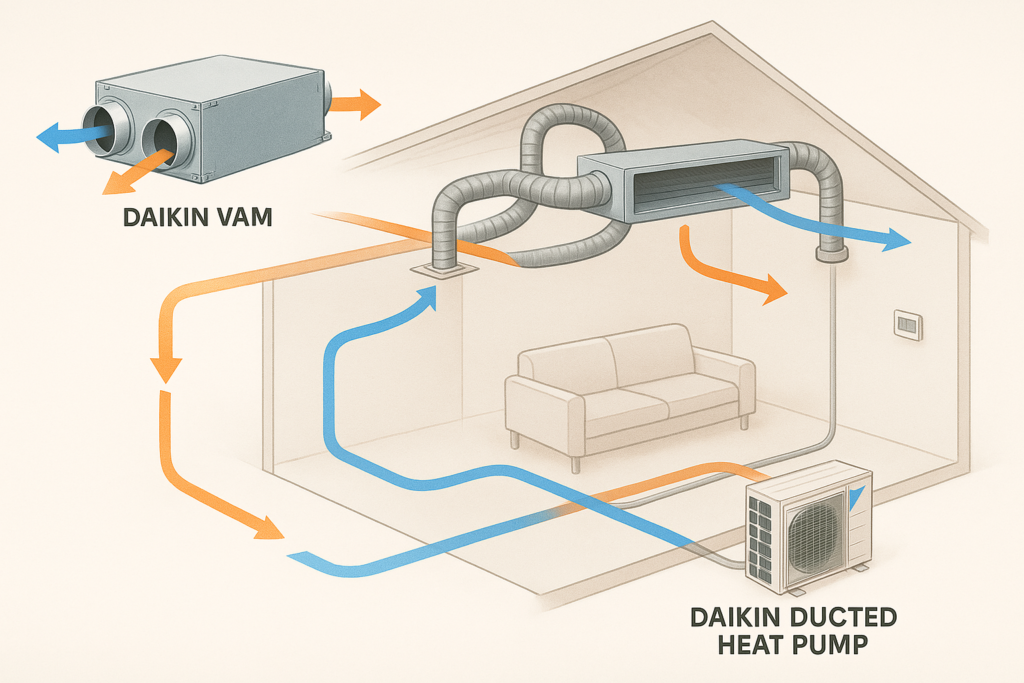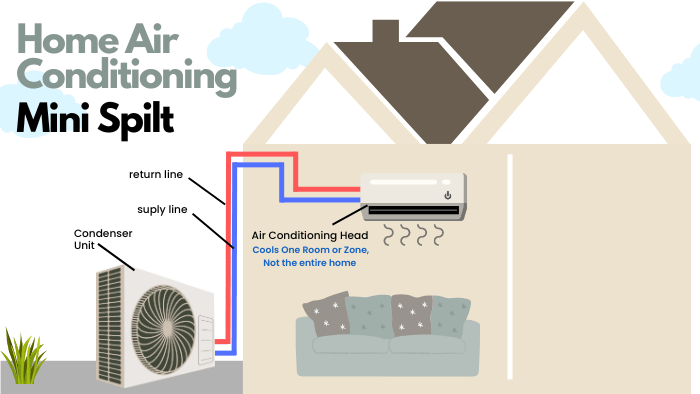Have you ever wondered what makes your home air conditioner cool the air so effectively? Understanding how a home AC unit works can help you take better care of it and keep your space comfortable all year long.
You’ll discover the simple yet smart process behind your AC’s cooling power. By the end, you’ll know exactly what’s happening inside your unit and how it keeps your home fresh and cool, even on the hottest days. Keep reading to unlock the secrets of your air conditioner!
Basic Components
Understanding the basic components of your home AC unit can help you appreciate how it keeps your space cool and comfortable. Each part plays a specific role, working together to remove heat from the air inside your home. Knowing these components also makes it easier to spot issues before they become big problems.
Compressor
The compressor is often called the heart of the AC system. It pumps refrigerant through the system, compressing it to increase pressure and temperature. If you’ve ever noticed your AC making a humming noise outside, that’s likely the compressor working hard to cool your home.
Condenser Coil
The condenser coil sits outside your house and releases the heat absorbed from inside. As the hot refrigerant passes through this coil, it cools down and turns back into a liquid. If your outdoor unit is dirty or blocked, the condenser coil can’t do its job well, which might explain why your AC isn’t cooling effectively.
Evaporator Coil
Inside your home, the evaporator coil absorbs heat from the air. The refrigerant inside the coil evaporates into a gas, pulling heat away from your indoor air. Have you ever felt cold air blowing from your vents? That’s the evaporator coil in action.
Expansion Valve
The expansion valve controls how much refrigerant enters the evaporator coil. It lowers the pressure of the refrigerant, allowing it to expand and cool before absorbing heat. Think of it as a gatekeeper, regulating the flow to keep the cooling process efficient.
Thermostat
Your thermostat is the control center of your home’s temperature. It senses the room temperature and signals the AC unit to turn on or off to maintain your desired comfort level. If your AC keeps running without stopping, checking the thermostat settings might be a simple fix.

Credit: www.mrcool.com
Cooling Cycle
The cooling cycle is the heart of how your home AC unit keeps you comfortable. It’s a continuous process that moves heat from inside your house to the outside, making your indoor air cooler and more pleasant. Understanding this cycle helps you appreciate the technology working quietly in the background every day.
Refrigerant Flow
The cooling cycle starts with the refrigerant, a special fluid that moves through the AC system. It flows in a closed loop, changing from liquid to gas and back again. This constant movement allows the refrigerant to absorb heat inside and release it outside.
Heat Absorption
Inside your home, the refrigerant absorbs heat from the warm indoor air. It does this in the evaporator coil, where the refrigerant evaporates into a gas by pulling heat out of the air. This process cools the air, which is then blown back into your rooms.
Heat Release
The heated refrigerant gas travels outside to the condenser coil. Here, it releases the absorbed heat into the outdoor air and turns back into a liquid. This step is crucial because it resets the refrigerant, preparing it to absorb more heat inside your home.
Air Circulation
Fans inside the AC unit play a key role in moving air over the coils. Inside your home, the fan pulls warm air over the cold evaporator coil, cooling the air before sending it back into your rooms. Outside, another fan blows air over the condenser coil to help release heat efficiently.
Energy Efficiency
Energy efficiency is a key factor in how your home AC unit operates and impacts your utility bills. Understanding the components that influence efficiency can help you make smarter choices. You might be surprised how small adjustments can lead to big savings.
Seer Ratings
SEER stands for Seasonal Energy Efficiency Ratio. It measures how efficiently an air conditioner cools your home over a season.
The higher the SEER rating, the less energy your unit uses to cool your space. For example, a unit with a SEER of 16 uses about 30% less energy than one with a SEER of 13.
Choosing an AC with a high SEER rating can lower your electric bills and reduce wear on your system.
Proper Sizing
Many people think bigger AC units cool better, but that’s not true. An oversized unit cycles on and off too often, wasting energy and causing uneven cooling.
On the other hand, a unit that’s too small will run constantly, struggling to reach your desired temperature.
Getting the right size means your AC runs efficiently and keeps your home comfortable. Have you ever felt a room was too cold or still too warm? That might be a sizing issue.
Maintenance Tips
Regular maintenance keeps your AC running efficiently and extends its life.
- Clean or replace filters:Dirty filters restrict airflow, making your unit work harder.
- Check coils:Dirty coils reduce heat absorption, lowering efficiency.
- Inspect refrigerant levels:Low refrigerant means your AC can’t cool properly.
- Clear debris:Keep outdoor units free of leaves and dirt to improve airflow.
Simple maintenance tasks can save you money and prevent breakdowns. When was the last time you checked your filters?

Credit: www.carrier.com
Common Issues
Home air conditioning units can face several common problems. These issues may reduce cooling efficiency or stop the unit from working. Understanding these problems helps keep your AC running smoothly and extends its lifespan.
Refrigerant Leaks
Refrigerant is the fluid that cools the air inside your home. Leaks in the refrigerant lines cause the AC to lose its cooling power. Low refrigerant levels make the unit work harder, raising energy bills. Signs of leaks include warm air from vents and hissing sounds near the unit.
Clogged Filters
Filters trap dust and dirt to keep the air clean. Over time, filters get clogged and block airflow. This reduces the AC’s efficiency and can cause the system to freeze. Regular filter cleaning or replacement prevents this issue and improves air quality.
Thermostat Problems
The thermostat controls the AC temperature. Faulty sensors or incorrect settings can stop the unit from cooling properly. A malfunctioning thermostat might cause the system to turn on and off too often. Testing and calibrating the thermostat fixes these problems.
Electrical Failures
Electrical issues affect the power supply to the AC unit. Loose connections, blown fuses, or faulty wiring can cause the system to shut down. These failures may also damage other components. Checking electrical parts regularly helps prevent sudden breakdowns.
Improving Performance
A home AC unit cools air by removing heat and moisture. Improving its performance means cleaner filters, proper sealing, and regular maintenance. This helps the unit run smoothly and cool your home efficiently.
Improving the performance of your home AC unit can lead to a more comfortable living space. It can also help in reducing energy costs. Paying attention to a few key areas can make a big difference. Here’s how you can ensure your AC is running smoothly.Regular Servicing
Routine maintenance is vital for your AC unit. Schedule professional servicing at least once a year. This keeps the unit clean and efficient. A technician will check for leaks, clean coils, and replace filters. These actions help prevent costly repairs. They also extend the lifespan of your unit.Smart Thermostats
Smart thermostats can enhance your AC’s performance. They allow you to control temperatures remotely. You can set schedules to match your daily routine. This reduces unnecessary cooling and saves energy. Some models even learn your habits. This allows them to adjust settings automatically.Insulation Benefits
Proper insulation keeps cool air inside your home. It reduces the workload on your AC unit. Check for gaps around windows and doors. Seal them to prevent air leaks. Add insulation in the attic if needed. This helps maintain a stable indoor temperature. It also improves energy efficiency.
Credit: blizzard.co.nz
Frequently Asked Questions
How Does A Home Ac Unit Cool The Air?
A home AC unit cools air by removing heat and moisture. It circulates refrigerant to absorb heat indoors and release it outside, lowering indoor temperatures efficiently.
What Are The Main Parts Of A Home Ac System?
The main parts include the compressor, condenser coil, evaporator coil, refrigerant, and fans. These components work together to cool and circulate air throughout the home.
How Often Should A Home Ac Unit Be Serviced?
Home AC units should be serviced at least once a year. Regular maintenance improves efficiency, extends lifespan, and prevents costly breakdowns during hot seasons.
Why Is Refrigerant Important In Home Ac Units?
Refrigerant absorbs and releases heat during the cooling cycle. Proper refrigerant levels ensure the AC cools effectively and prevents system damage or inefficiency.
Conclusion
A home AC unit cools your space by moving heat outside. It uses a refrigerant to absorb heat from indoor air. The fan helps blow cool air into rooms. Regular cleaning keeps the unit running well. Understanding how it works helps you use it smartly.
Stay comfortable during hot days with proper care. This simple system makes your home fresh and cool.





